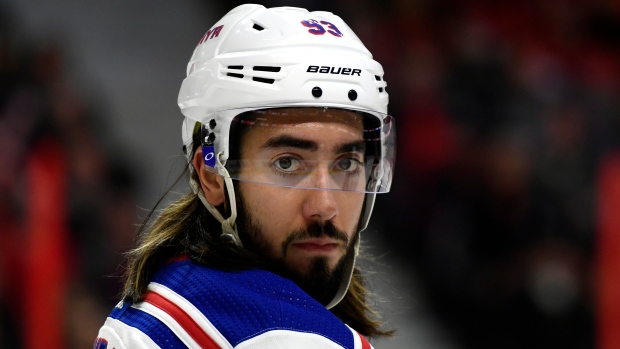Feb 2, 2021
Yost’s Posts: What should fantasy hockey managers do with Zibanejad?
What should I do with New York Rangers centre Mika Zibanejad? It’s one of the most common questions I’ve received over the first few weeks of the 2020-21 NHL regular season – a question proffered by many fantasy hockey owners who are concerned about Zibanejad’s lack of production.

What should I do with New York Rangers centre Mika Zibanejad?
It’s one of the most common questions I’ve received over the first few weeks of the 2020-21 NHL regular season – a question proffered by many fantasy hockey owners who are concerned about Zibanejad’s lack of production.
Zibanejad, now 27 years old, is in the fourth year of a $26-million dollar contract with the Rangers and has established himself as a reliable top-six centre since leaving Ottawa. Zibanejad’s career trajectory over those years has been fascinating to follow.
Many blue-chip prospects enter the league bringing scoring flair without the responsible two-way defensive hockey coaches need, but Zibanejad was in the opposite situation – an established player at both ends of the rink, but one whose offensive production appeared to have a limited ceiling.
That line of thinking evaporated over time. If we follow Zibanejad’s offensive production over the years, we see two trends: a player increasingly comfortable and capable in the offensive zone, and a player who consistently beats league averages for comparable forwards:

The 2020-21 season is quite limited – Zibanejad has played just nine games so far – but the scoring numbers have been grim. Zibanejad’s lone goal this season came on the power play, and his lone assist came on a Pavel Buchnevich goal in the second game of the year.
That would be a slow start for any player of Zibanejad’s stature, let alone the player that we watched tear the Eastern Conference apart (41 goals and 34 assists) just one season ago.
Scoring slumps happen from time to time, and it’s important that when you are doing anything forward looking, you are reconciling two critical questions:
- Is the coaching staff still utilizing the player in the same or similar manner?
- Is the player still offensively active and being undermined by poor puck luck, or have his (and his linemates’) offensive scoring opportunities dwindled with time?
Let’s start with the deployment question, because I do think it’s the more interesting of the two in this case. We know simple ice time isn’t a factor – he’s playing about a shift less than last season but he’s still comfortably over 20 minutes a night, about where we would expect a top-six centre on a given team.
The players he’s playing with have changed though – in large part because of the Rangers winning last year’s draft lottery and grabbing blue-chip prospect Alexis Lafreniere with the first-overall pick. Lafreniere has been boosted immediately into the Rangers top six, and that means playing a decent chunk of minutes with Zibanejad:

It seems specious to argue Lafreniere’s presence is having such a dramatically adverse effect, but of his common linemates this season, Zibanejad’s least productive offensive minutes have come when paired with the 19-year-old rookie.
One other thing head coach David Quinn’s experimentation has done is put more separation between the likes of superstar Artemi Panarin and Zibanejad. Most of the Panarin-Zibanejad offensive magic did manifest itself on the power play, and last season they only played together about 32 per cent of the time. That’s gone down this season, and is perhaps something to keep an early eye on.
Since Zibanejad’s playing relatively similar minutes and with relatively similar teammates, let’s turn our attention to the offensive production categories.
If we were concerned about Zibanejad’s slow scoring being indicative of larger struggles to come, we would see that Zibanejad’s simply less active in the offensive zone – he’s shooting less, his teammates are shooting less, the team is generating a higher proportion of their shots from the perimeter, and so on.
That’s precisely what’s happened in the opening month of the season:

This is the sort of data that you look at as a coaching staff and conclude that changes may be needed.
The Rangers can ill-afford to have a line inside of the top six this unproductive offensively, and whether it’s on the shoulders of Zibanejad or his teammates (the answer is probably all of the above), the reality is they have taken a considerable step down from where they were one season ago. A season ago that, despite lucrative offensive seasons from their best players, saw the team only reach the postseason because of the expanded playoffs.
If you are a fantasy owner, you don’t want to hit the panic button immediately. But you should know that this doesn’t appear to be a mere shooting slump either. The Zibanejad line in New York is off to an awfully slow start, and their lack of scoring is largely tied to the fact that they’ve been so infrequently in the offensive zone.
Data via NHL.com, Evolving Hockey, Hockey Reference









